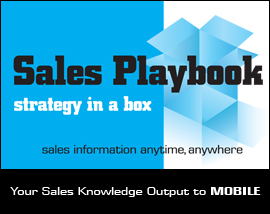The Sales Negotiation Process

There is a misconception in sales that people buy price. However, in a complex business sale, people don’t buy price they buy risk. Knowing this is paramount to ensuring your sales efforts are superlative. It’s important to be able to show that you have the least risky solution to their problem. If you can do this, price becomes almost irrelevant.
Another thing critical to the process is understanding that you are the #1 choice. Many people go into negotiation without believing they are the clear winner. Instead, they go in ready to price cut to make it to that #1 spot. In situations like negotiation seminars individuals are taught how to sell, but never how to finish the sale with positive negotiation. If you are the #1 choice and they know they want to buy your service, the next step in their mind is to see what price they can get you at. The individuals you are selling to are trained to squeeze you, trained to get as much out of you as possible at the lowest price. Most sales people find it hard to respond to this in a positive way; you have to remain aware that they need you just as much as you need them.
When a potential customer presents you with a budgeting issue ( it will happen), look to other places that budget can be taken from. If they claim there is no other place where monies can come from, look to their next budgeting cycle. Since most customers’ primary concern is price, be sure to always refocus on value and begin with a value analysis upfront. Expressing your value to the customer is key to a successful negotiation strategy. Do this by collaborating with the client; look at their gross margins, net margins, price earning ratio etc., to produce some kind of value-creation mechanism. Doing this as a collaborative effort is important. You don’t want it to become you telling them what you’re going to do, but rather you guys coming to those conclusions together.
Tip: Instead of cutting price in order to make a project successful, try offering something like in-house or extensive training. Find something that lowers the risk further for your client, but isn’t a dollar for dollar trade-off.
read moreGSD Supports Community Futures Thompson Country

For the past year, GSD has supported Community Futures Thompson Country (CFTC) in delivering Business Planning Workshops to their clients in the Thompson region. Entrepreneurs interested in starting their own business can apply to a business plan workshop which is provided by CFTC. If eligible, they join the month long program where they receive training on how to prepare and complete a written business plan.
Experts from GSD support the team at CFTC by providing resources and support regarding the development of their plans. This includes delivering training on how to conduct market research, effectively promote their business and create a marketing plan. The clients also receive coaching and insights from industry experts on how to sell themselves and their business. Launching a business takes a lot of different skills and knowing how to properly target the right customers; the right message and right marketing tactic is paramount to launching any new start up.
Business owners learn about how to create better relationships with customers, how to define their selling proposition and how to create personal sales plans. The difference between CFTC clients and other programs supporting new start-ups is that they work with sales and marketing leaders like GSD to provide real world examples of what it takes to launch and sustain a business. At the end of the day it’s about getting out and personally selling your business. Those entrepreneurs that go the extra mile in personally promoting their business are more likely to succeed.
If you or anyone are interested in starting your own business, contact the local CFTC in Kamloops or GSD.
read moreImportance of CRM Software
CRM (customer relationship management) allows business owners to deal with with operational challenges such as declines in sales, high customer turnover, and disconnection between revenue goals and commission policies. If you are the owner of a small business there are many ways in which these client tracking tools can improve your bottom line and give your business superiority in key operational areas. We have chosen the top five reasons that we believe to be the most relevant. Note, make sure whichever program you choose fits your company’s processes, industry, revenue cycles and customer segment.
- Client Management
Using a CRM tool to improve client management can be done by gaining more visibility into your client’s needs, considering tactics necessary for long-term profitability, and creating plans that encourage your staff to enter new operational territory. For example, if the software you are using reveals that 75% of your clients are in a certain sector, you could then hire on extra salespeople who are experienced in that sector. You could also try setting up a new training program to increase your current staff’s knowledge of that specific sector, possibly saving you money associated with the overhead costs that are accrued when hiring new staff.
- Tracking Profitability
CRM tools will undoubtedly ease up the workload for your accountants. Thanks to the implementation of a CRM tool, they no longer have to worry about tracking every dollar of revenue and focusing on things like shipping costs, discounts and returns. The software especially helps small businesses, who will notice their bookkeeping system speeding up and accuracy of financial reporting improving, both of which are very important processes in the value chain (referring to the tasks and tools that allow a business to grow sales, run operations efficiently, and produce positive results at the end of the year).
- Adherence to Regulations etc.
If you apply the correct settings to your CRM tool (most CRMs allow you to instruct flagging of high-risk clients or generate relevant documents based on clients’ risk scores), you may not need to hire a compliance analyst to perform regulation checks. Effective client policies allow owners to make some business processes that were previously manual, automatic. In the long term this approach usually works, especially when it helps you stay in compliance with industry standards and you utilize a CRM tool.
- Sales Strategy
The last thing you ever want is to lose an opportunity for income by targeting the wrong customer segmentation. Especially as a small business this can result in slender margins long-term. CRM tools can provide you with valuable information about short-term and long-term sales trends, allowing you to adjust existing sales strategies and tactics. For example, a three year analysis of your cleaning services’ sales data indicates that incomes from private-practice lawyers and doctors is in a decline, while the revenue obtained from car manufacturers is on the rise. Using these results you may decide to strategically target car manufacturers and lessen your efforts in targeting private-practice lawyers and doctors.
- Improving Customer Service
CRM tools can improve your company’s customer service practices, allowing employees to respond to client inquiries more quickly and efficiently. For example, a small business owner can track customer complaints and see why their company is not performing as well as it should be. CRM software can also serve insights into a client’s ordering trends, bettering the chances that staff are not messing up any question related to ordering in the future.
read moreCreating Better Sales Behaviours
Everything your company does from strategizing to implementation, and everything in between, determines how accurate your business forecast is. This leads to there being a lot of room for error, which can result in a poor standing at the end of the period. We recognize the importance of your sales behaviour and how it is directly linked to performance. So, we have pinpointed some tips (for both sales managers and sales reps) which will hopefully aid in creating better sales behaviours and in turn, better performance.
Sales managers are in a position to lead a team, they are the individuals who have to implement the changes and oversee the results. There are three things that we believe sales managers can do to encourage the improvement of their team’s sales behaviours.
1. Decide on and implement a sales process: according to The Tas Group, 50% of sales reps already have sales processes in place. However, as a sales manager it is up to you to create an effective sales process and train your team to follow it to ensure they are not wasting valuable time setting their own tactics and strategies.
2. Give your team the necessary tools: there are many instances when sales reps have inaccurate sales forecasts because they aren’t able to track activity correctly or have a hard time understanding the data that is produced. Mobile tools, allowing personnel to report and review data wherever they are, are a great idea when choosing which tools to provide.
3. Never forget about current customers: many companies spend so much money and time targeting new customers, while their existing customers end up leaving for a competitor. Never forget that it takes more money and time to obtain a new customer than it does to keep a current one, and that excellent customer service (even after the client deal is done) should always be at the core of your sales culture.
Now that your managers have implemented changes to improve sales behaviours, it’s up to your reps to follow through and apply the tactics appropriately. The following are three things we believe your sales reps should be doing to create better sales behaviours.
1. Be smarter when prospecting: it’s important to spend more time where prospecting clients spend it and reach them on that medium, whatever it may be. For example, if prospects you are targeting are on LinkedIn and Google+, it might be a good idea to vie for their attention on these mediums instead of conducting cold calls throughout the week. Though this may be more time consuming, it will provide you with more useful leads.
2. Get to know your customers: one huge problem sales reps have is understanding their customer’s problems. Instead of spending time pitching your product or service, it’s important to take the time and really listen to what the customer is saying and what issues they are facing. From here hopefully you will be able to find a solution that best fits their needs, and look like an expert in the process.
3. Be sure you are focusing on the right leads: it is quite easy to filter out leads that are clearly never going to purchase your service or product; what is difficult is being able to say goodbye to the leads who don’t follow through on commitments or string you along. As a sales rep you should learn how to spot these lead types and move on from them quickly, leaving you more time to follow up on leads who may actually buy.
Managing Sales Growth Stalls
At some point every business will reach a place where once rapid sales and organizational growth reaches a plateau, or sales momentum stalls completely. This loss of momentum is referred to as “the stall”, and if not dealt with quickly can seriously jeopardize an organization. When you find yourself in this situation or at risk, it is time to shift gears, and reevaluate your strategy.
1. Start over! Less is more when competing for your customers’ attention in the marketplace, so create a select list of of ideal prospects to focus on and direct all of your team’s resources to one target. Develop a strong marketing plan to attract those ideal prospects and create at least one spectacular piece of content per week to maintain marketplace presence. Use the medium and channel that will best reach that target, whether it be a video, social media campaign, or a more traditional medium – just ensure that it will refuel the rest of your marketing actions. Then take the main piece and break it down into “bite-size” micro campaigns that can then be turned into blog posts, Twitter tweets, memes, or info graphics.
For example, launching a new weekly product video. That video can then be broken down into smaller commercial-length videos, a blog post, and multiple social media posts.
2. Start thinking about how to grab your purchasers’ attention! Put yourself in their shoes, and discover their likes and interests, and do your research – you’d be surprised what you can learn from your customers just by asking.
Find a way to stand out and make yourself memorable, while opening the door to a conversation on how you can help them achieve their goals.
If you want to get out of the stall, you have to know exactly who you’re marketing to, you need to be extremely easy to find, and you have to be creative to get your targeted decision maker’s attention for a chance to talk to them. For more information on how to kickstart your team’s sales and marketing, contact our team at 250.574.8800 today to book a complimentary strategy call today, or visit www.growthstrategydynamics.com
read more

